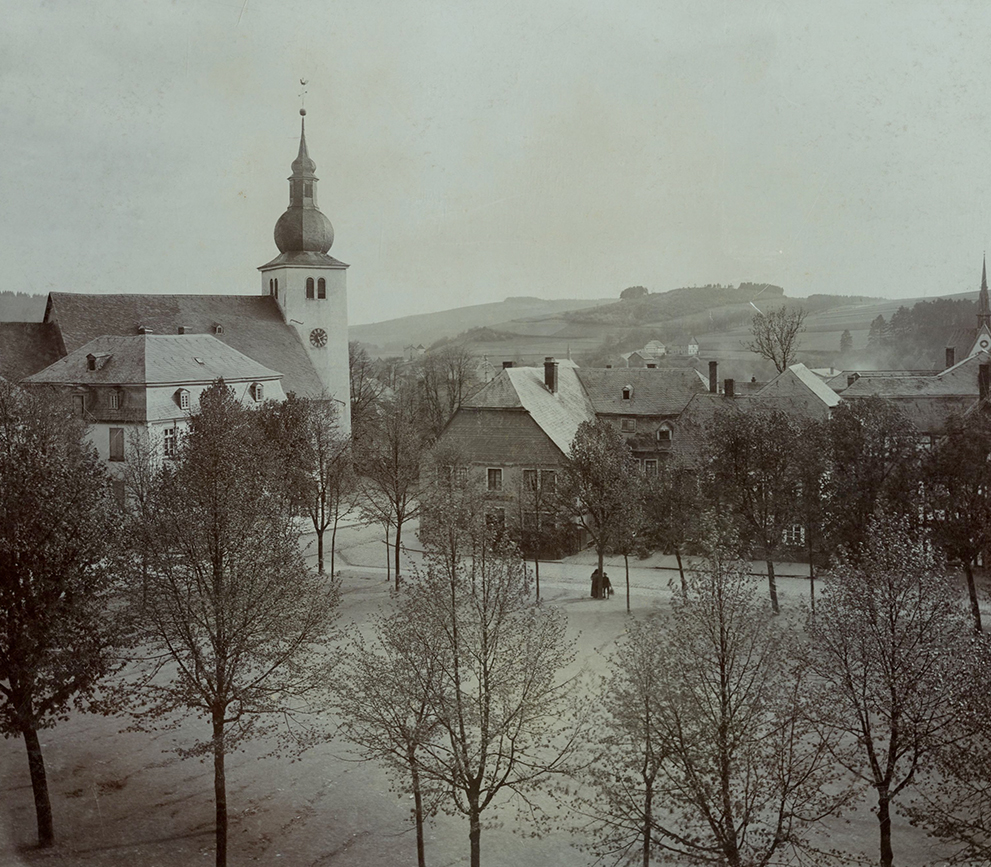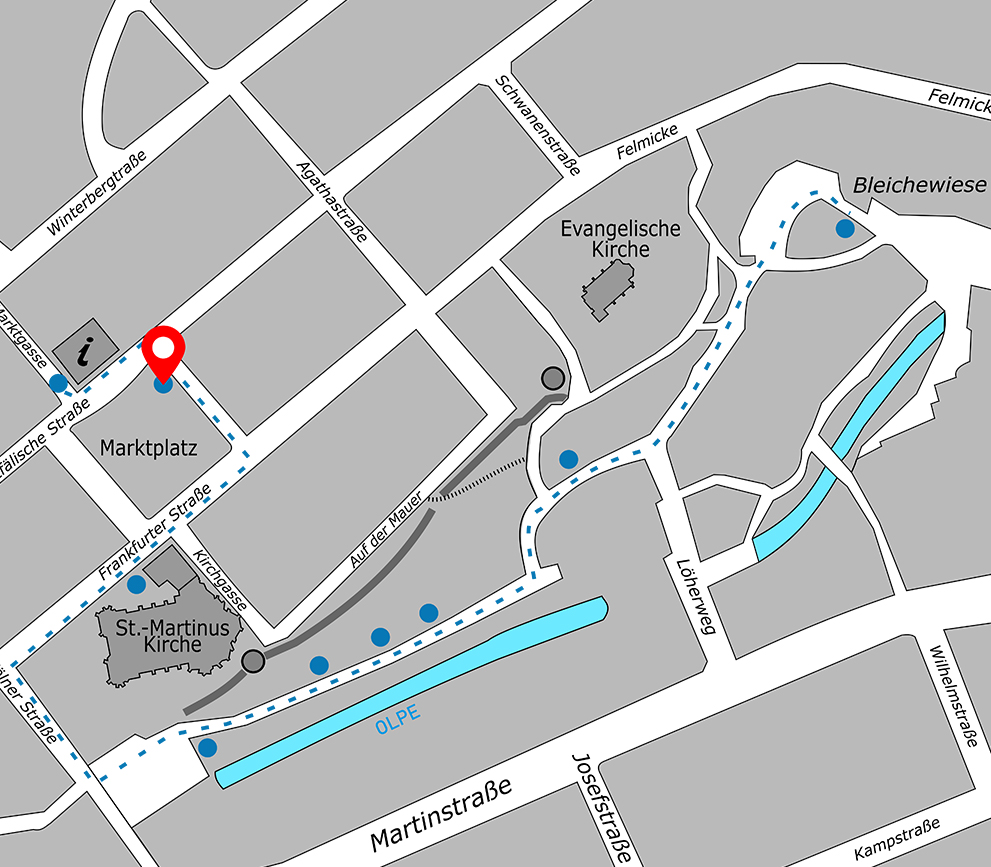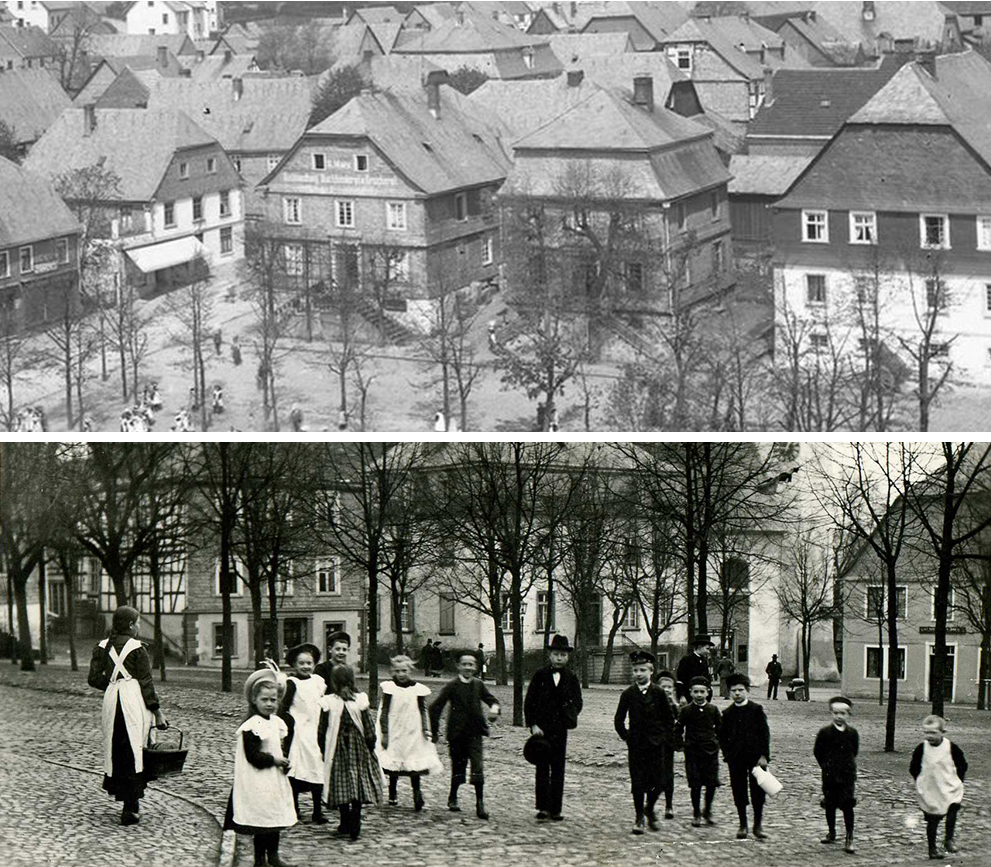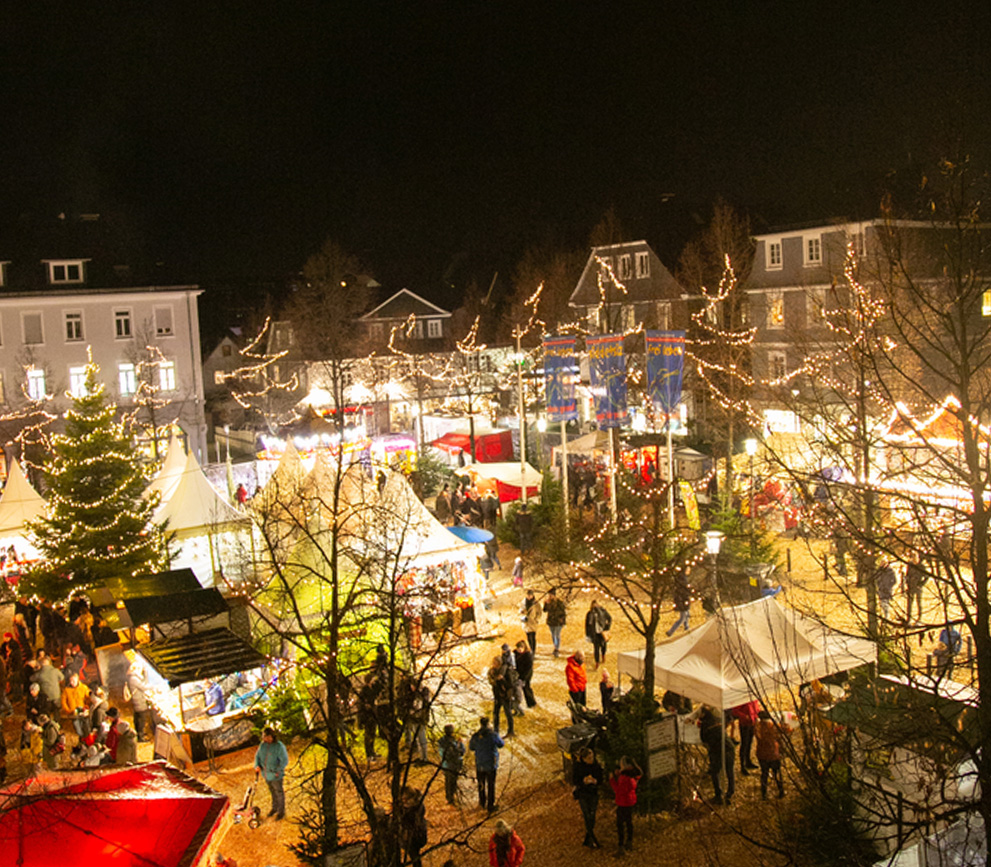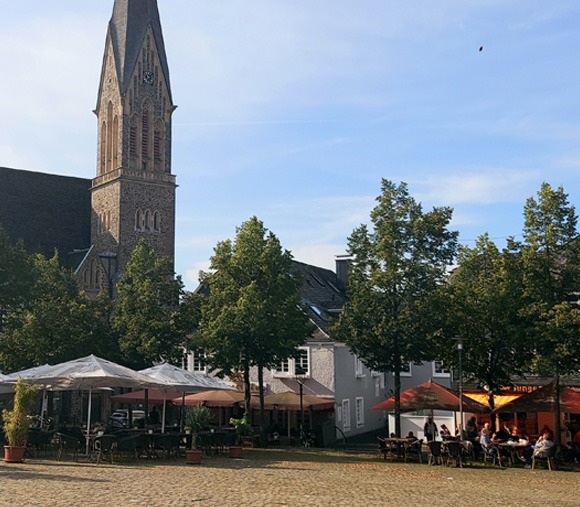
- Audio-Führung
starten - Hörspiel
für Kinder - Audio-
Führung für
Sehgeschädigte
2Marktplatz
On the morning of 28 April 1795, a huge blaze destroyed Olpe’s town centre. More than 250 houses burned down within one hour – around 80% of the town’s buildings. On the orders of the local ruler, the Elector of Cologne, the town was rebuilt within a very short time based on a completely different master plan under the supervision of the Elector of Cologne’s master builder, Johann Adam Stahl. The main concern during the reconstruction, which was designed according to classical architectural ideals, was to protect the buildings from another catastrophic fire: wide streets intersecting at right angles have defined Olpe’s town centre ever since. The new, largely half-timbered houses had to be built at a prescribed distance from each other. A large, almost square-shaped market square was laid out in the centre of the town – on an area that was still under construction prior to the blaze. During the reconstruction, this square was a prime residential location where large, two-storey houses were erected by wealthy townspeople. The simpler, much smaller tradesmen’s and day labourers’ houses were built in the neighbouring Winterbergstrasse or in Felmicke.
Slate roofs provided additional protection against fire. A solid roof had been mandatory since 1795, but only the more affluent townspeople could afford one. The half-timbered houses of the ordinary folk were still sometimes thatched with straw up to the beginning of the 20th century. At first, slate was also used as protection on the windward side of the houses; it was not until the end of the 19th century that slating the entire building became common practice.
The streets of the town centre have been planted with lime trees since 1907. This not only created magnificent avenues, giving the town the designation “lime tree town” or “town of the 1,000 lime trees”, but limes also protected against flying sparks in the event of a fire.




